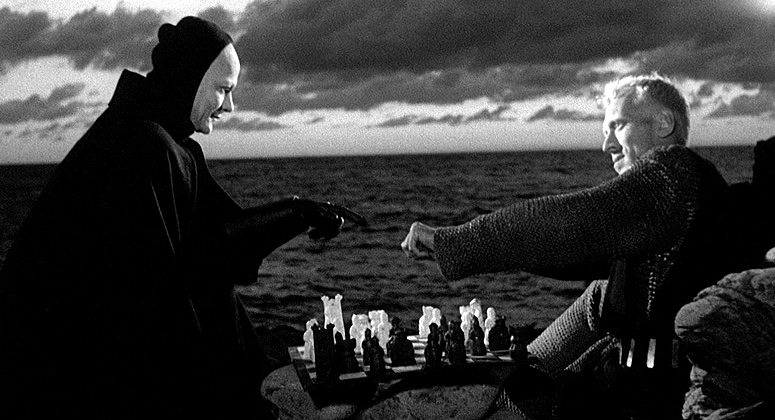
The medium of film can encompass many aspects. It can be simply entertaining and very commercial. It can also be deeply probing and highly artistic.
This is not to say that any of the types of film making can’t be without a high level of craft and skill. However, the type of film created for the sake of artistry alone without commercial concern seems to exist mostly outside of the mainstream Hollywood system. For many years the center of this type of activity was Europe (not that all European films were made for art alone).
Europe has been a center of artistic, often individualized, film making virtually since there has been film making. There were occasional films which did break through into the international market in the early years of film but the post World War II period marked the time the European art film began to achieve a real presence in that market.
Why that decade? There were a number of reasons. The world had become a smaller place during the World War II years and places which had once been nothing but unusual sounding names attached to dots on the map for most US citizens had become quite immediate places.
Added to this in the US was the fact that the long-standing Hollywood “movie factory” was coming apart. This was being facilitated by the Supreme Court anti-trust decision which divorced the studios from the chains of theaters which had been created to exclusively show their films and from the new medium of television, which weakened the film industry’s hold on popular entertainment culture.
This allowed films from independent and foreign sources to finally get a substantial foot in the door of the US film world, in which such films had previously been much more marginalized (though these films were, and are, still far from mainstream fare).
In those days, the dedicated film lover had to seek these films out in “specialty” theaters which would show non-Hollywood films, museums which were liberal enough to consider film an art form and wished to showcase more “artistic” works, including those from other lands, and that most interesting of vanished movie era artifacts, the film or cinema club or society. (This was back in the days when people would still care to congregate together in groups.)
Though the films of this era were harder to see than similar ones of later decades, the pay off was that they and their makers, many fresh and new and filled with innovative ideas, became quite iconic. Many of the European films which became famous and acclaimed during this time are still among the staples of any serious film student’s education.
The following list highlights some of the great films which marked that era. Is this definitive? No, there are many mores which could be listed. However, here now appears a completely subjective and biased list…
1. Orphee (1950)
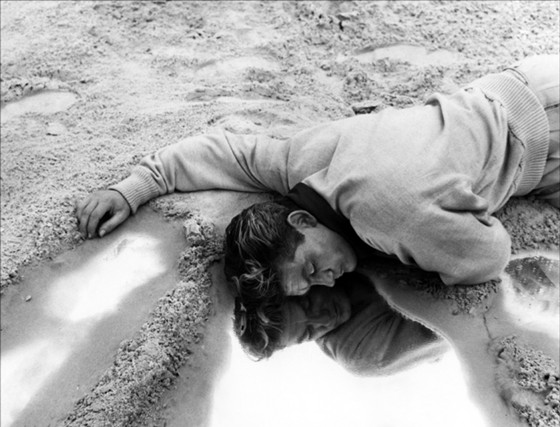
To label many a “film maker” would be either a simple job description or a flattering appellation depending upon circumstances. To apply that label to France’s Jean Cocteau, however, would be something of a slight. Cocteau enjoyed success as an artist, poet, playwright, novelist and designer. He was an intimate of many of the great artistic figures of the 20th Century.
Honestly, if the spirit of art were to be distilled into human form, that form might well be Jean Cocteau. The trade off with Cocteau, perhaps, was that he spread himself a bit thin and no one area of creativity was truly was more prominent than another. That he is remembered for his work in the film world at all, much less is so high esteemed, is extraordinary in light of the rather small filmography attributed to him.
He wrote a number of successful scripts and worked closely with those who directed them (such as a young Jean-Pierre Melville on 1948’s Les Parents Terribles, from his own acclaimed and popular novel). However, his own directorial efforts are mostly defined by his unforgettable Beauty and the Beast from 1946 and three films from three different eras in which he interprets the ancient Greek myth of Orpheus in different ways (mainly through the lens of the stages of his own life).
The first, in 1930, was the famed avant garde short The Blood of a Poet and the third, in 1959 was The Testament of Orpheus, a remarkable and clear eyed summing up on his own life and career. That film was largely predicated on the centerpiece of the trilogy, 1950’s second version, Orpheus (Orphee). This take says a lot about art and the artist’s place in society in addition to its dreamlike story of love and death in a fantastic realm.
In this telling (set with deliberate ambiguity in a vague place and time) Orpheus (played by Cocteau’s handsome and stalwart love, Jean Marias) is a poet who has had success but is now tasting unpopularity for daring to go his own way. A new young poet, under the auspices of an elegant but mysterious noblewoman (Maria Casares), is set to take his place but an accident, apparently planned by his patron, kills him.
The woman spirits the body and Orpheus from the café setting of the event and they all go in her limousine to her castle, which is located outside any mortal plane. It turns out the woman is Death and she returns the deaceased poet to a kind of non-life, with the promise of the same for Orpheus.
The ensuing plot involves Orpheus’ wife Eurydice (Marie Dea) and Death’s chauffeur Heurtebise (Francois Perrier), who becomes an aid to Orpheus, along with lots of stylish sets and camera set ups along with loads of symbols unclear to virtually everyone but Cocteau himself.
The bottom line is that this surreal film is very personal but haunting and intriguing. Cocteau obviously identifies with Orpheus and seems to feel that he is part of a cycle in which classic human myths are embodied again and again. Perhaps they will, but the next versions will have to go a long way to top this one.
2. Diary of Country Priest (1951)
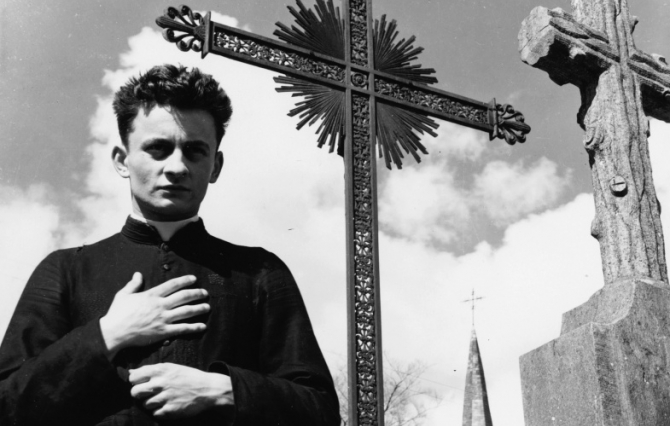
Some films and film makers simply would not be conceivable in the mainstream Hollywood system. A case in point is France’s Robert Bresson and virtually every one of the baker’s dozen film he created. The word “austere” would be a great understatement in Bresson’s case and his themes of intense spiritual conflict are far from commercial.
Though his films do tell stories, they are truly more concerned with the emotional currents of the characters being of supreme importance. The films are quite measured, do not contain much, if any, exposition and are always cast with non-professionals (“models” to the director), who are always instructed to state their lines in the most emotionless of monotones. (Bresson was greatly angered when “model” Dominique Sanda went on to create a noted acting career, spoiling in retrospect the realistic effect desired.)
Though not his first film, the first great “Bresson” film is Diary of a Country Priest. Though the director’s films are not religious per se, this one is set in the ecclesiastical world.
The title character (Claude Laydu) has been sent to his first parish and things are not going well at all. He is sickly (dying, as it turns out), an unpopular object of fun among the rather gauche locals, and even criticized for his plain diet (all he is able to eat, actually). He is also the victim of spiteful rumors. He is not destined to win hearts but his stoic struggles serving as a testament to his faith is quite moving.
The reserved and cerebral films of Bresson’s oeuvre were never crowd pleasers (though this one made money) but they remain among the great films of personal cinema.
3. Miracle in Milan (1951)
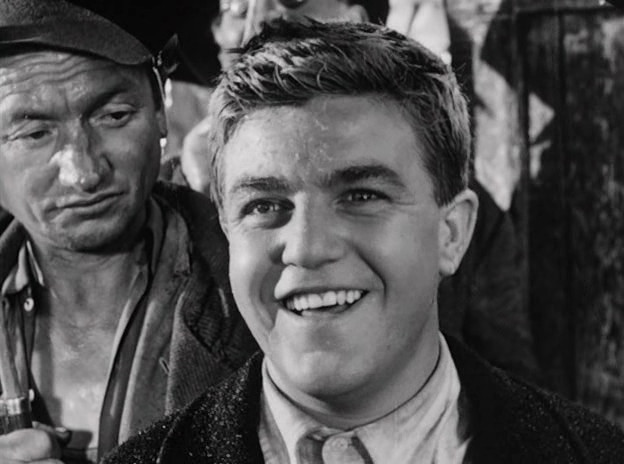
Virtually any film fan asked to define who Vittorio de Sica was would probably state that he was an Italian director-writer-actor (though never in his own films) who was central to the ultra-realistic “neo-realist” movement which became so influential when it was founded in Italy in the later days of World War II. This may well have been the first guerilla style wave of cinema in which no sets, no professional actors, no scripted dialog, nothing artificial was used.
De Sica’s heartbreaking Shoeshine (1946) and Bicycle Thieves (1948) are often considered the highest points of the movement. However, there was far more to him than just that (though that was more than many contribute). De Sica realized that the effect of the war era and all the inherently dramatic situations it created couldn’t last forever and wisely started to modify the style.
A real surprise was Miracle in Milan, the first (and, probably, only) neo-realist fairy tale. The story takes place in the run down outskirts of Napels. A sweet elderly woman named Lolotta (Emma Gramatica, a non-professional, like the majority of the cast) finds a baby in her cabbage patch (yes, just as children are always told…).
The baby, a boy she names Toto (Francesco Golisano as an adult) is raised with loving care but, alas, Lolotta is too old to live to see him through to adulthood. She dies and he goes to an orphanage. However, he returns as an adult and, between what the beloved lady taught him, what he learned in the orphanage, and what nature gave him, he starts leading and helping the impoverished community of his youth.
However, everyone needs help at times and Lolotta’s spirit returns from Heaven with the gift of a magical, wish-granting dove. This, however, is not the miracle, as Heaven jealously snatches it back as capitalist forces conspire to destroy the little settlement and its inhabitants for their own ends. What happens thereafter is the miracle.
The thought of a fairy tale coming from such a gritty, truthful style sounds absurd but DeSica pulls it off because he shows the same love and compassion for the small, poor, helpless, and abused (especially children) which marked his more typical films.
This one might not now be as famous as the aforementioned films and 1952’s moving Umberto M but it is in the same class and a memorable achievement.
4. Fanfan la Tulipe (1952)
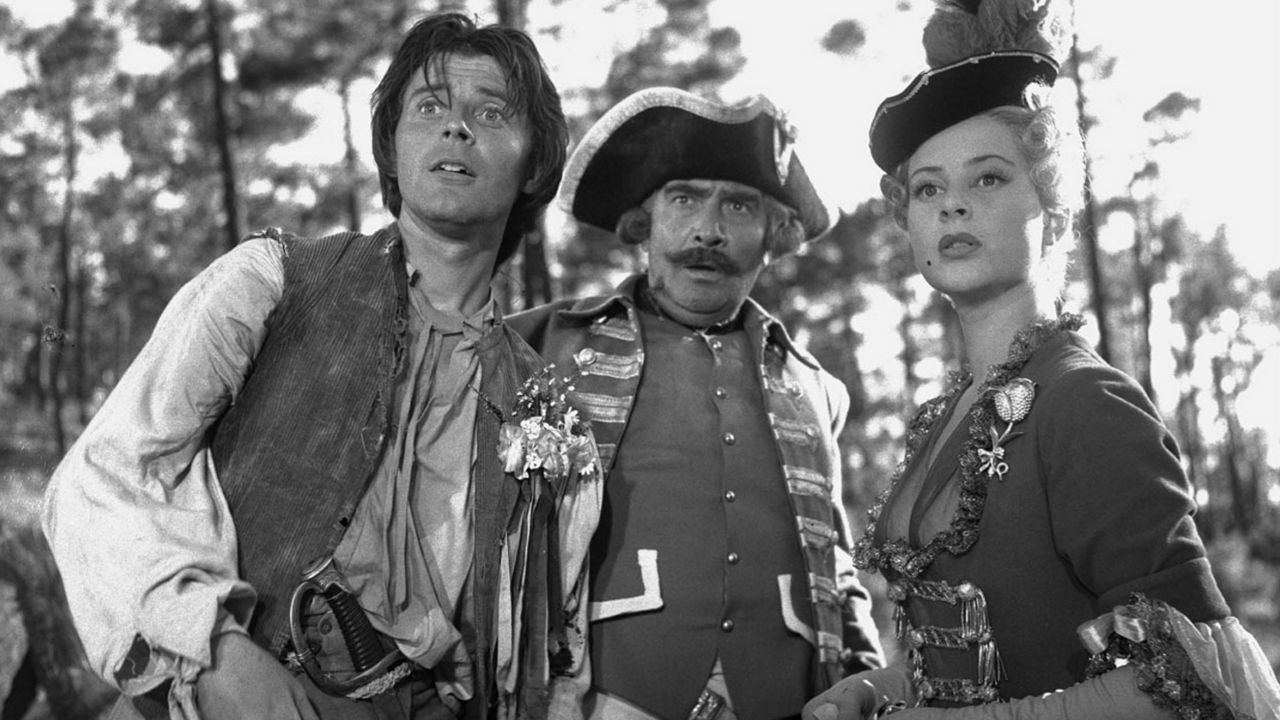
Speaking of miracles, one of the cinemas finest was French actor Gerard Phillipe. Highly attractive in a sensitive and rather Gallic way, he was something of a matinee idol but, unlike most of that ilk, he was both well trained as an actor and highly skilled. He started acting on screen (after a long training on stage) at only 19 and found fame after only a few years in the acclaimed hit Devil in the Flesh in 1947.
He made many good career choices, which was especially good since he only lived to age 37 (dying from liver cancer, which he endured longer than expected). He did make some highbrow films but he had a lighter side as well and one of his most popular was Fanfan ls Tulipe.
The title character is a somewhat roguish but naïve young man living during France’s Seven Years War of the 18th Century. Escaping a shotgun wedding situation, he is corralled into joining the army by the sharp-witted daughter (Italy’s famed Gina Lolabrigida, early in her career) of the local recruiting officer.
The young woman only wants to help dad and promises the handsome chump the moon (including the promise he will marry a queen). Fanfan will have many a swashbuckling adventure and start to fall in love with the young woman but he will stubbornly (and foolishly) refuse to let go of all the ridiculous promises.
The film was directed by former set designer Christian-Jacque, who was a pleasantly capable talent not well known outside of France. There he was best remembered for the vehicles he directed for wife Martine Carol (best known as the controversial star of 1955’s Lola Montes) and for this film. Honestly, he created a great setting for a memorable talent. That’s worth something.
5. Forbidden Games (1952)
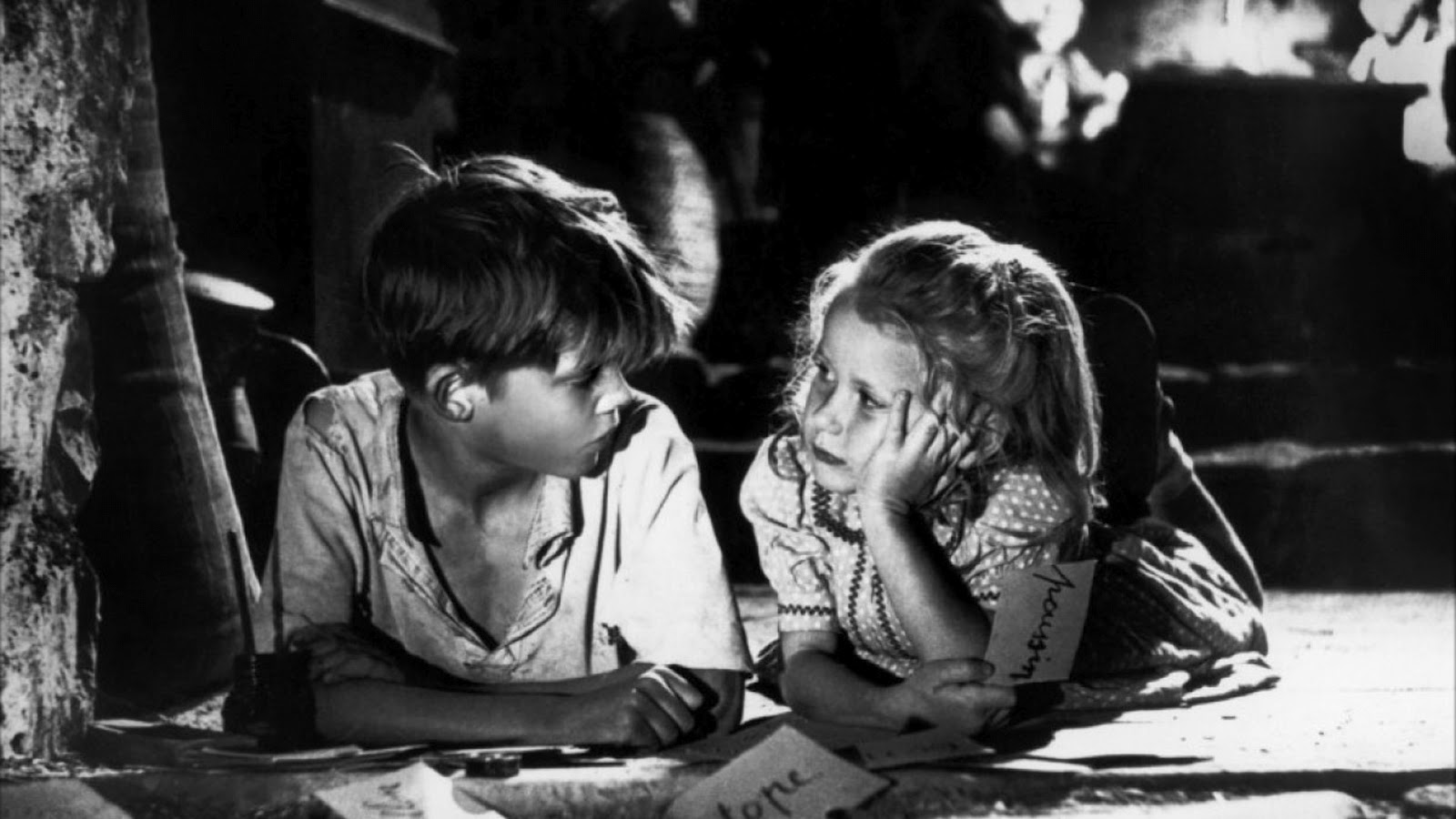
Few things in this world remain static and the reputations of films, as anyone interested in film history knows, is not among the few. There are many films which were disparaged on release to be championed much later in time. Sadly, some films with lofty reputations fall from favor, sometimes for no good reason. Included in this number is the Oscar winning Forbidden Games.
Perhaps the film’s fortunes have been tied to those of its director, Rene Clement. Clement was always a very professional film maker and he had been working as a director for over ten years when this film hit, rising from controversy (it was a hit at Cannes, despite having to be screened out of competition and derided for its bleak view of the French farming class).
The next few years were golden (including directing Gerard Phillipe in 1954’s Monsieur Ripois) before cresting with what is now his best known picture, 1960’s Plein Soleil (Purple Noon, the first version of The Talented Mr. Ripley). After that, until the end, things did not go as well. The sad thing is that Forbidden Game was justly one of the art house staples for many years.
The story takes place during World War II. A little girl name Paulette (a remarkable child actress named Bridgette Fossey) is among those escaping from the invading enemy when an ambush kills all but her (including her puppy). After finding her wandering, members of the local farming community take her in, not knowing quite what she’s experienced.
The farm family’s slightly older son Michel (Georges Poujouly) befriends and comes to love her and helps her in trying to work through her trauma the only way she knows, by stealing grave markers and ornaments in order to give small, dead animals funerals. The adults discover this and the results are heartbreaking.
Perhaps the rather cynical tastes of modern audiences and a taste for grittiness has hurt this film which is often perceived as sentimental. However, many forget that the innocent are the ones damaged most in times of war and who is more innocent than children? Hopefully, in a kinder time, this film will find its audience again.
6. The Golden Coach (1953)
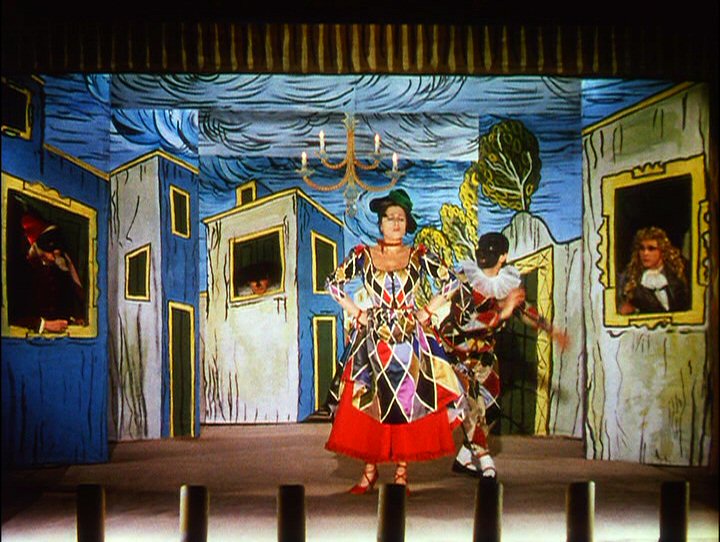
French director Jean Renior is truly one of the great film makers…ever. He managed to emerge from the shadow of his famous painter father Pierre-Auguste to become a rising star on the French film scene in the 1920s and the premiere film maker of that country in 1930s, an unusually rich time in that nation’s proud film history. Alas, World War II, Nazi invasion, escape to a somewhat indifferent Hollywood (though he loved it there) and a rather cold welcome back at home hampered things.
Admittedly, the films he made upon his return didn’t have the luster of those from before he left, but those films were the best ever made (La Grande Illusion, 1937-The Rules of the Game, 1939).
A film which had a rather cold reception upon release but which looks quite wonderful now is The Golden Coach. (Renior had intended to create three versions of this films, in English, French and Italian, but the producers said no after the English version was completed and only that version was shot with dubbing creating the other two.)
The film starred the greatest Italian film actress of her day, Anna Magnani, in the role she was born to play, the star diva of a theatrical troop. The story takes place in a small town in Peru in the 18th century. A local big wig has ordered the title vehicle to be produced with money he has usurped from the populace in order to gift it to his mistress, though he tells everyone that it will create happy public morale since it will be used as a symbol of the town’s prosperity.
On the ship bringing the coach is also a commedia del’arte troop, made up of many souls but none as impassioned and impressive as lead actress Camilla. Before the world turns too many times, she will enchant three important men, including the gift-giving noble, and it begins to look like she may well end up with the coach, though the price could turn out to be a bit high.
In one marvelous scene, Carmilla is romance by all three men in three adjoining rooms at the same time without any knowing of the presence of the other two! In the end, she realizes,though, that there can only be one true love….
Magnini is remembered as the most dramatic of actresses but she had a lighter side, too, and displays it to perfection here in one of her great performances. The colorful and beautifully designed film is also a visual treat (thankfully, restored in recent years) and is now taking its place among the best of Renior’s works.